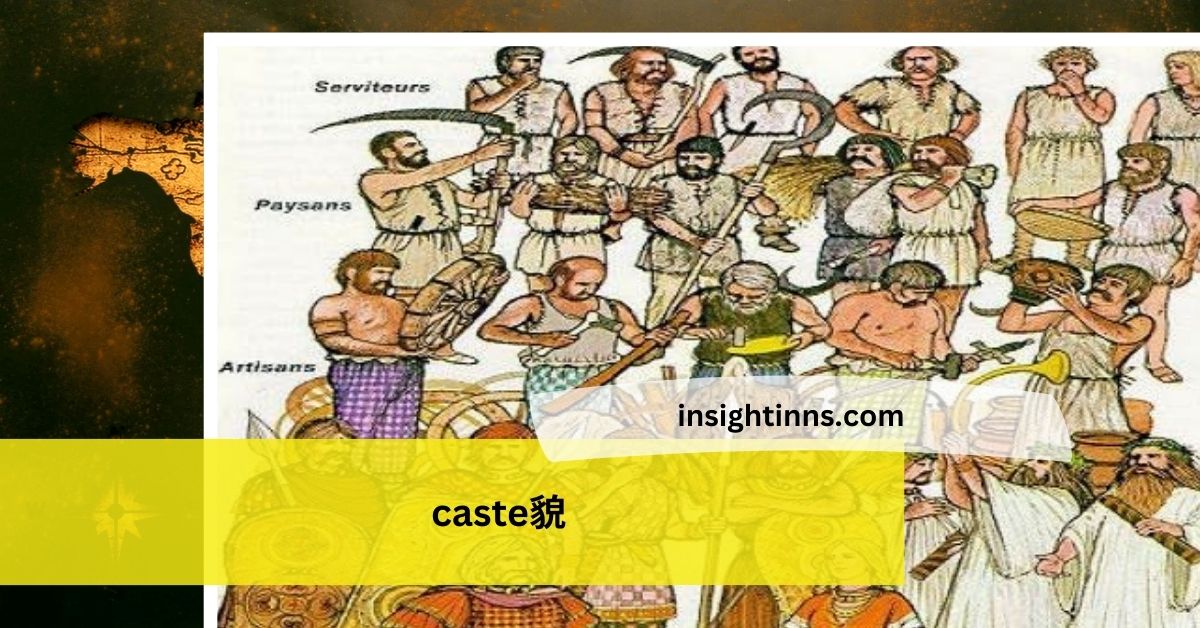Caste貌 is a complex social structure that has historically shaped societies around the world, particularly in South Asia, though similar systems have existed elsewhere.
Unlike social status, which can change based on factors like wealth or education, caste貌 is traditionally determined by birth and is deeply ingrained in cultural, religious, and economic practices.
In this article, we will delve into the social hierarchies and cultural dynamics associated with caste貌.
Historical Origins and Cultural Significance
The origins of caste貌 can be traced back to ancient India, where it evolved from a system of occupational divisions to a rigid hierarchy that dictated social roles and interactions within communities.
Over time, caste貌 became intertwined with religious beliefs and practices, influencing not only individual identity but also economic opportunities and political power structures.
The cultural significance of caste貌 extends deeply into societal norms, rituals, and traditions, shaping collective identities and interpersonal relationships.
It influences how communities organize themselves socially, religiously, and economically, reflecting historical practices that have endured through generations.
Caste貌 dictates ceremonial roles, religious observances, and community celebrations, embedding itself within the fabric of daily life and communal cohesion.
This cultural significance underscores its pervasive impact on societal dynamics, reinforcing hierarchical structures and defining social interactions within communities.
Key Features of Caste貌
ey Features of Caste貌 include its hereditary nature, social hierarchies, occupational specialization, and influence on cultural practices:
- Hereditary Nature:
Caste貌 is typically inherited from one’s parents, determining one’s societal position from birth.
- Social Hierarchies:
It establishes a hierarchical order where each caste has its own status and responsibilities, with limited mobility between castes.
- Occupational Specialization:
Traditionally, each caste was associated with specific occupations, leading to economic divisions and social stratification.
- Cultural Practices:
Caste貌 influences cultural traditions, rituals, and customs, shaping community dynamics and interpersonal relationships.
Challenges and Contemporary Relevance
Despite significant efforts aimed at addressing caste貌-based discrimination and promoting equality through legal reforms and social movements, substantial challenges persist in achieving genuine social justice and equality.
Discrimination rooted in caste貌 continues to impact access to education, employment opportunities, and social mobility, particularly affecting millions of people in rural areas and marginalized communities across various societies.
Impact on Education and Employment
Caste貌 exerts a profound influence on access to education and employment opportunities, perpetuating inequalities and significantly limiting economic mobility, especially for marginalized castes within society.
Political Influence and Governance
Caste貌 plays a pivotal role in shaping political alliances, electoral strategies, and governance in countries where it holds sway, influencing policies and resource allocation based on demographic divisions defined by caste貌.
This entrenched influence impacts the formulation of policies and the distribution of resources, thereby shaping the socio-political landscape significantly.
FAQS
1. What is the caste貌 system?
Caste貌 is a social hierarchy that categorizes individuals into distinct groups based on birth, influencing social status, occupation, and cultural practices.
2. Is caste貌 limited to India?
While most commonly associated with India, similar caste-like systems have existed in other cultures and regions throughout history.
3. an individuals change their caste貌?
Traditionally, caste貌 is inherited and difficult to change, though modernization and legal reforms have led to some degree of social mobility.
4. What are the different castes in the caste貌 system?
The caste貌 system traditionally includes four main castes: Brahmins (priests and scholars), Kshatriyas (warriors and rulers), Vaishyas (merchants and traders), and Shudras (laborers and artisans). Below these are the Dalits, historically known as “untouchables.”
5. How does caste貌 affect marriage and social relationships?
Caste貌 often determines marriage practices, with social norms favoring endogamy (marriage within one’s own caste) to preserve caste purity and traditions.
6. What role does caste貌 play in religious practices?
Caste貌 has historically influenced religious rituals and practices, with certain castes having specific roles and privileges within religious institutions.
Conclusion
Caste貌 remains a significant aspect of social identity and organization in various societies, influencing cultural practices, economic structures, and political landscapes.
Understanding its historical foundations, contemporary implications, and ongoing challenges is crucial for fostering inclusive societies where diversity is celebrated, and every individual has equal opportunities for growth and fulfillment.
By examining caste貌 through a lens of historical analysis, sociological perspectives, and contemporary relevance, we can strive towards a more equitable future where social justice and human dignity prevail.
